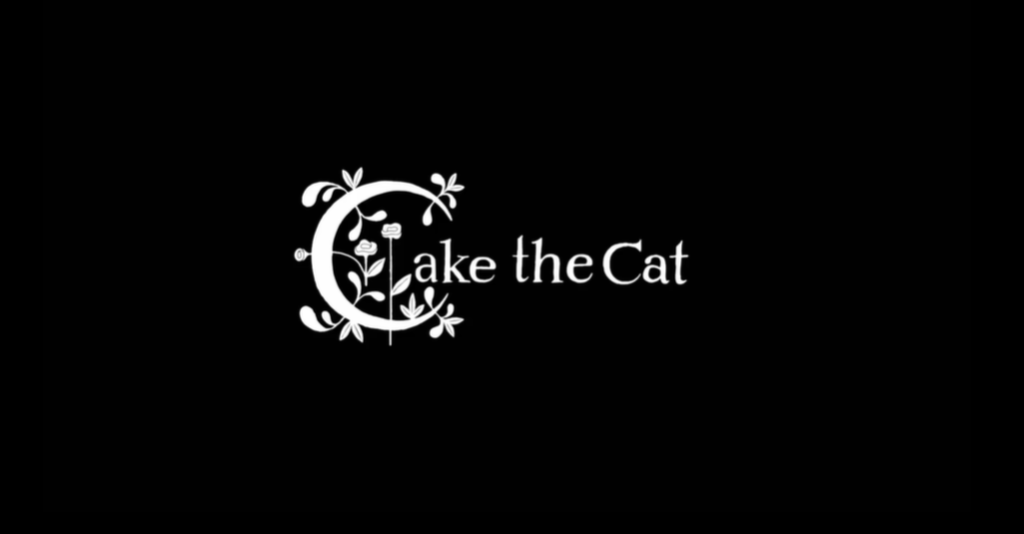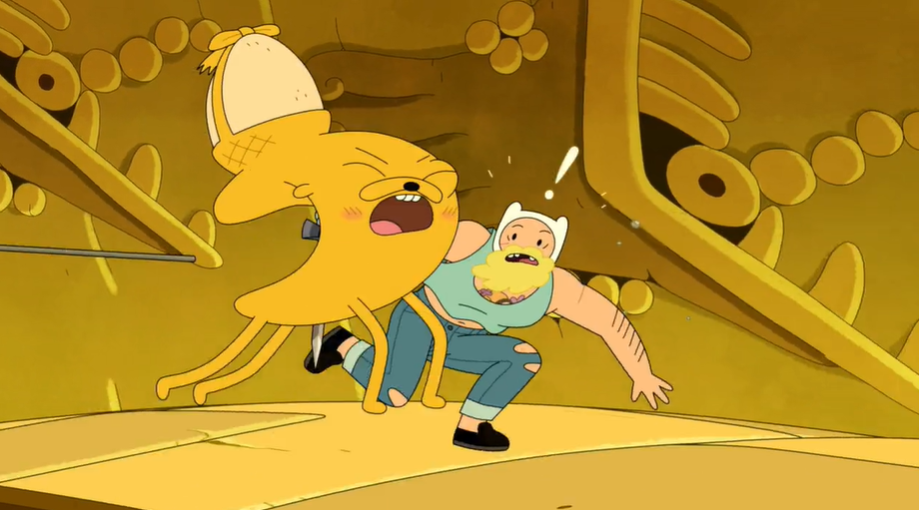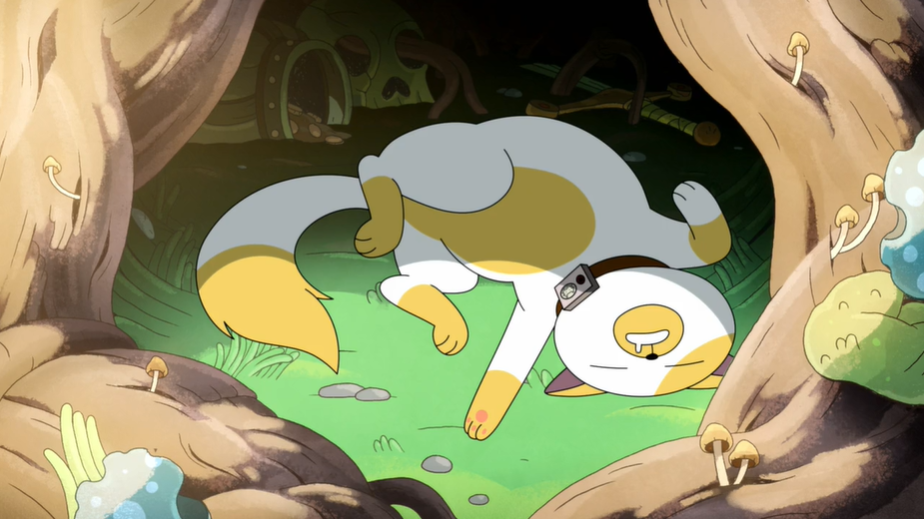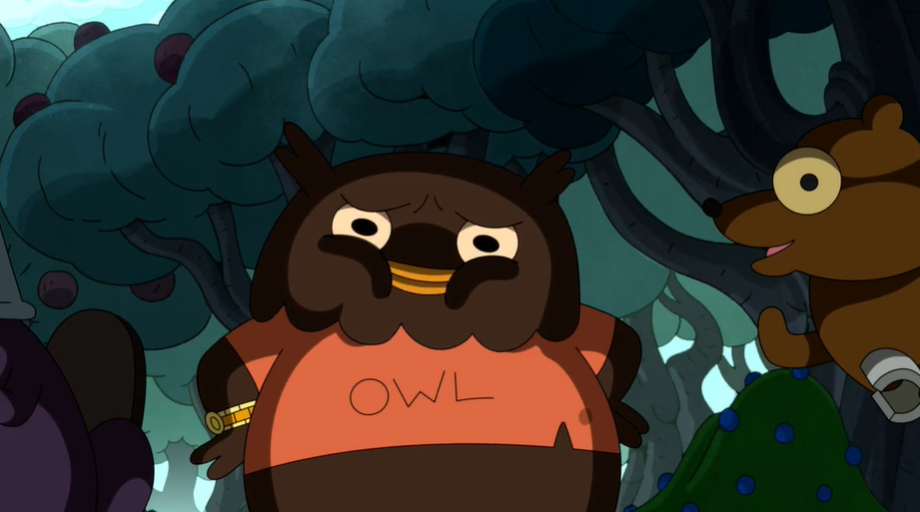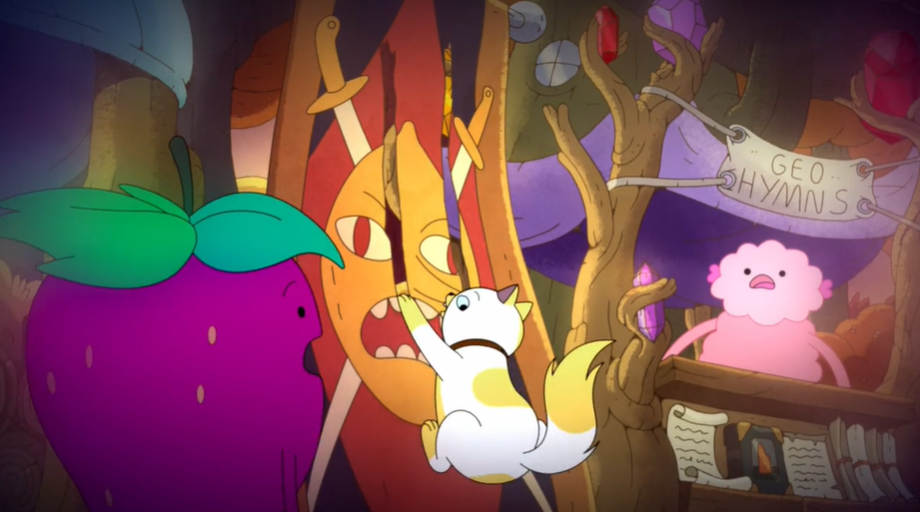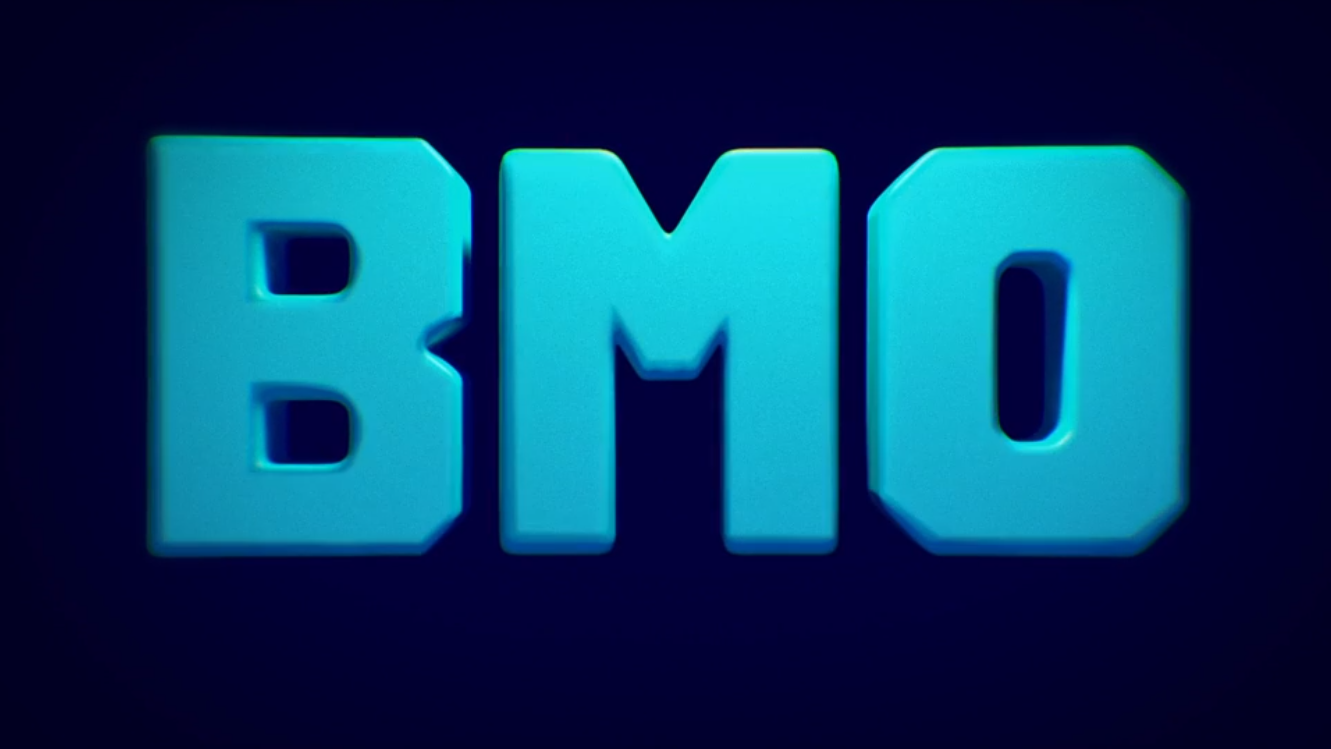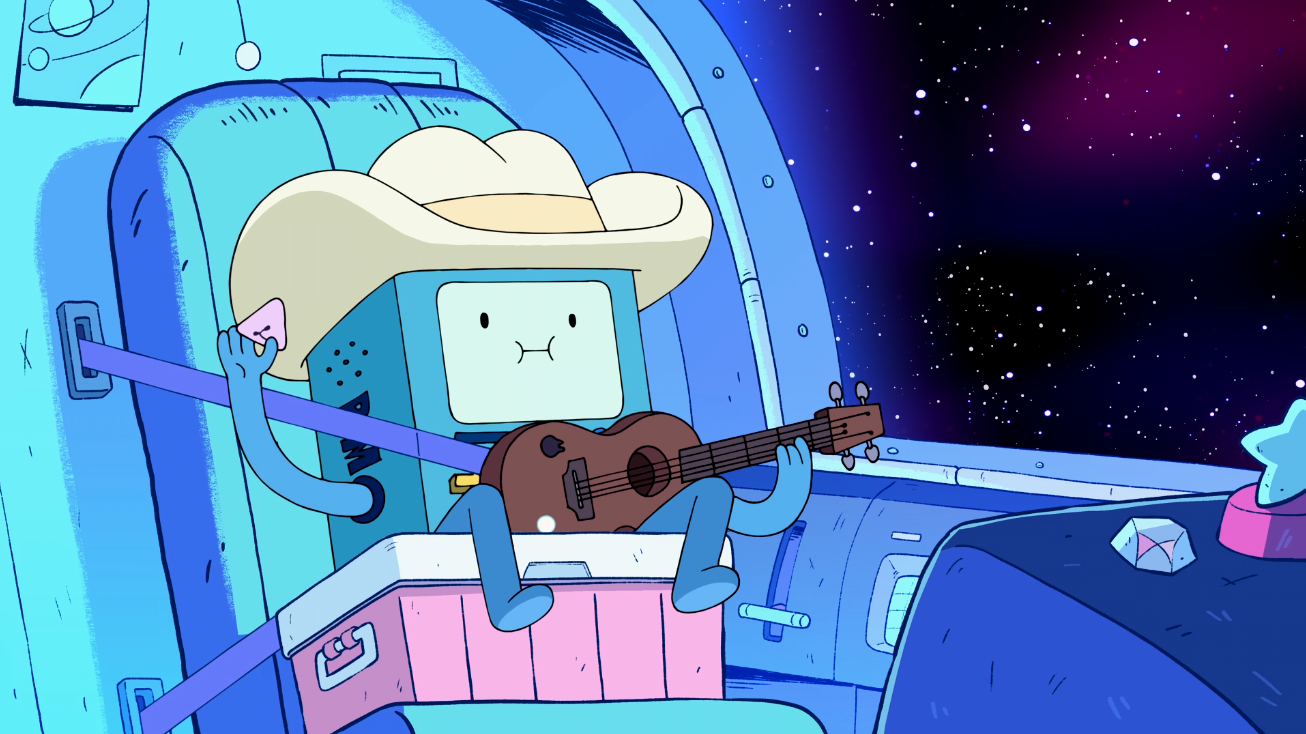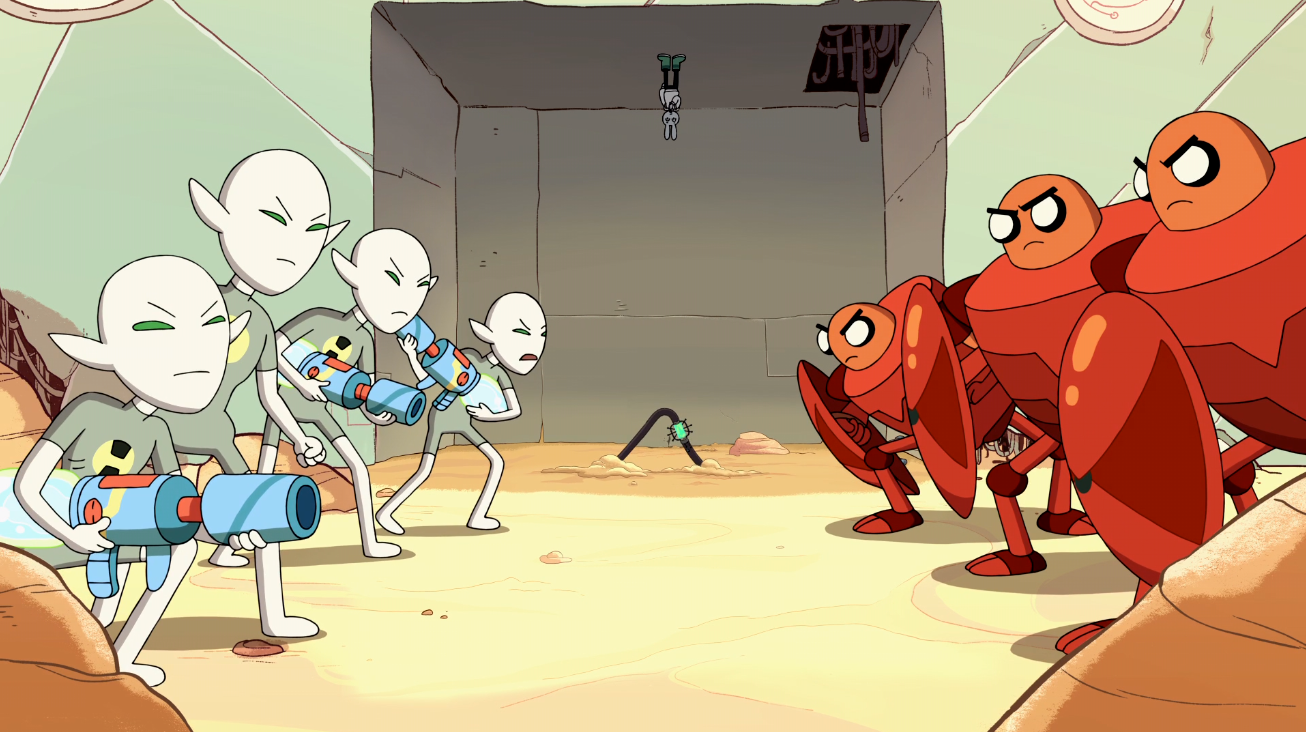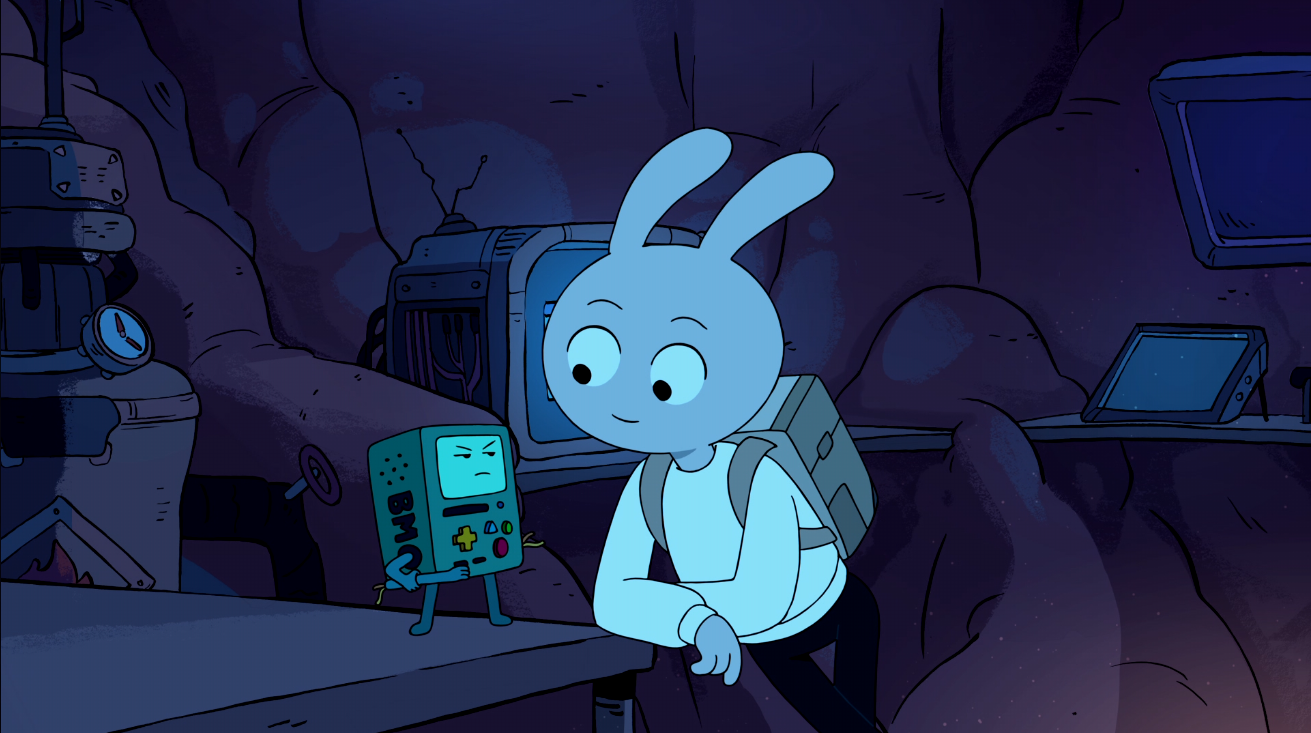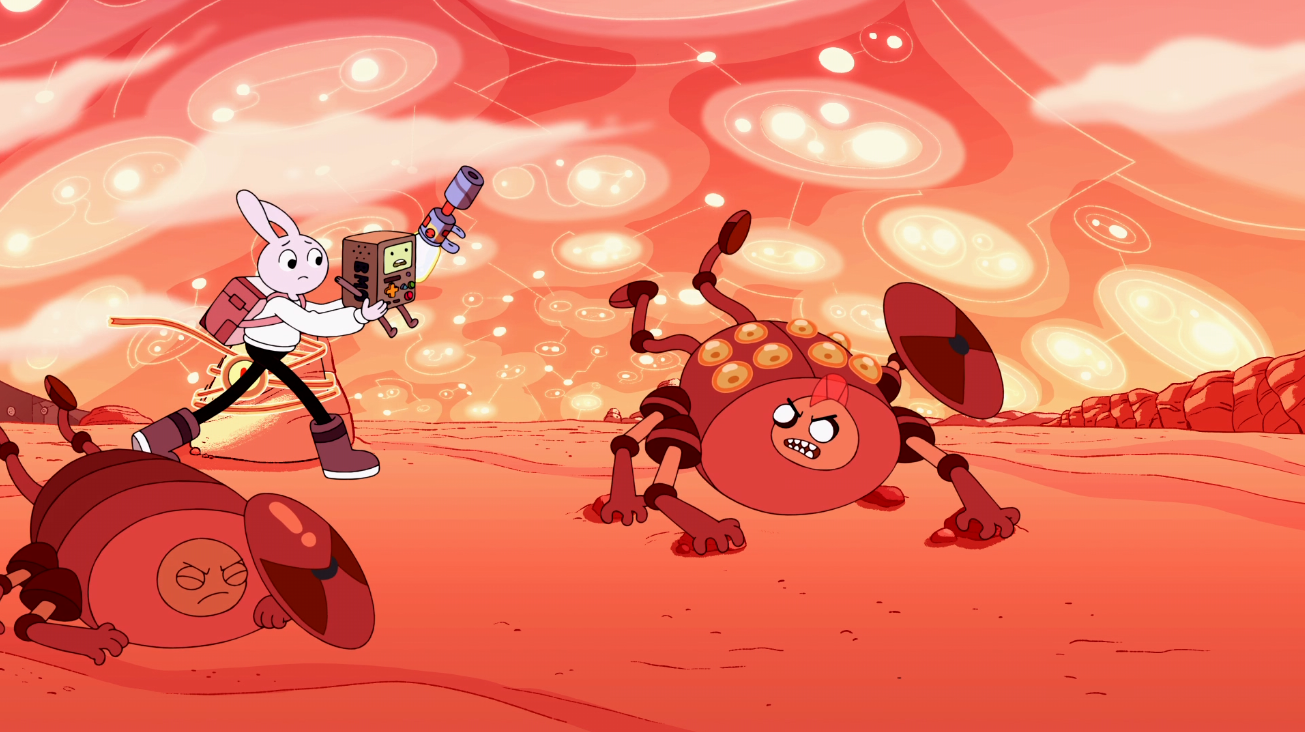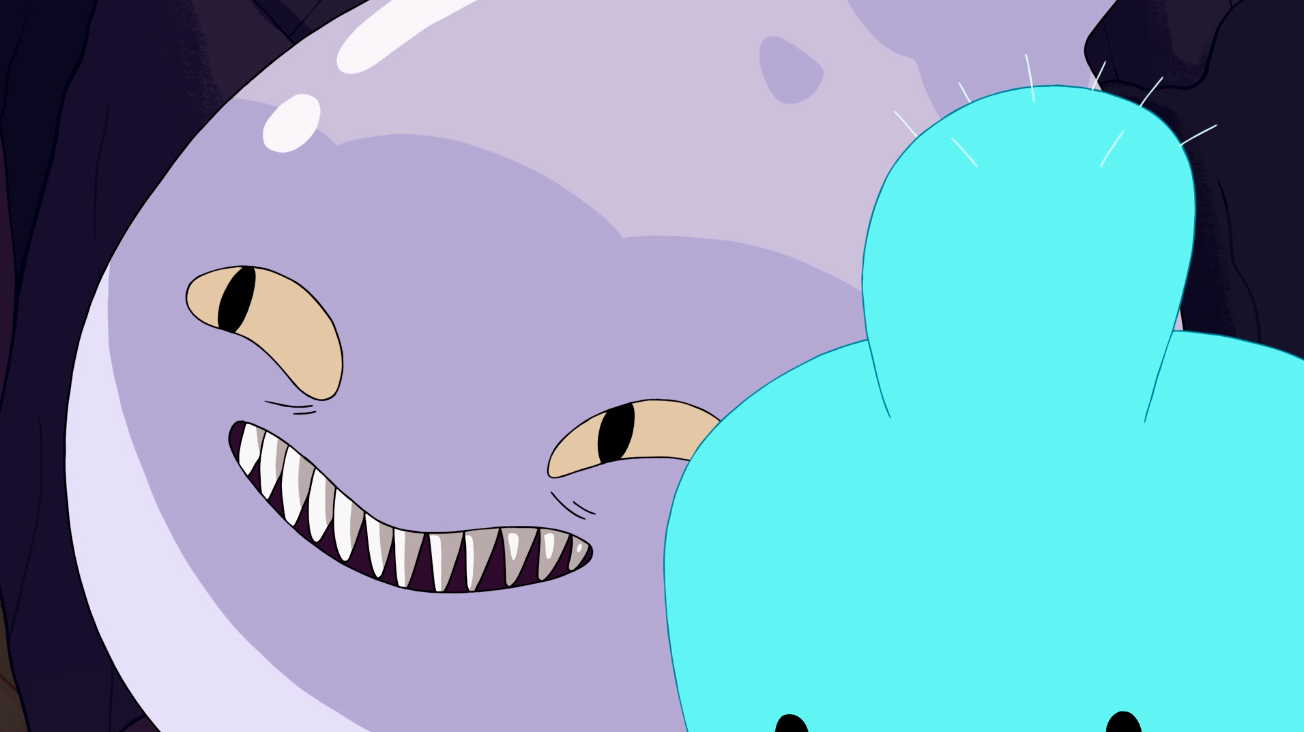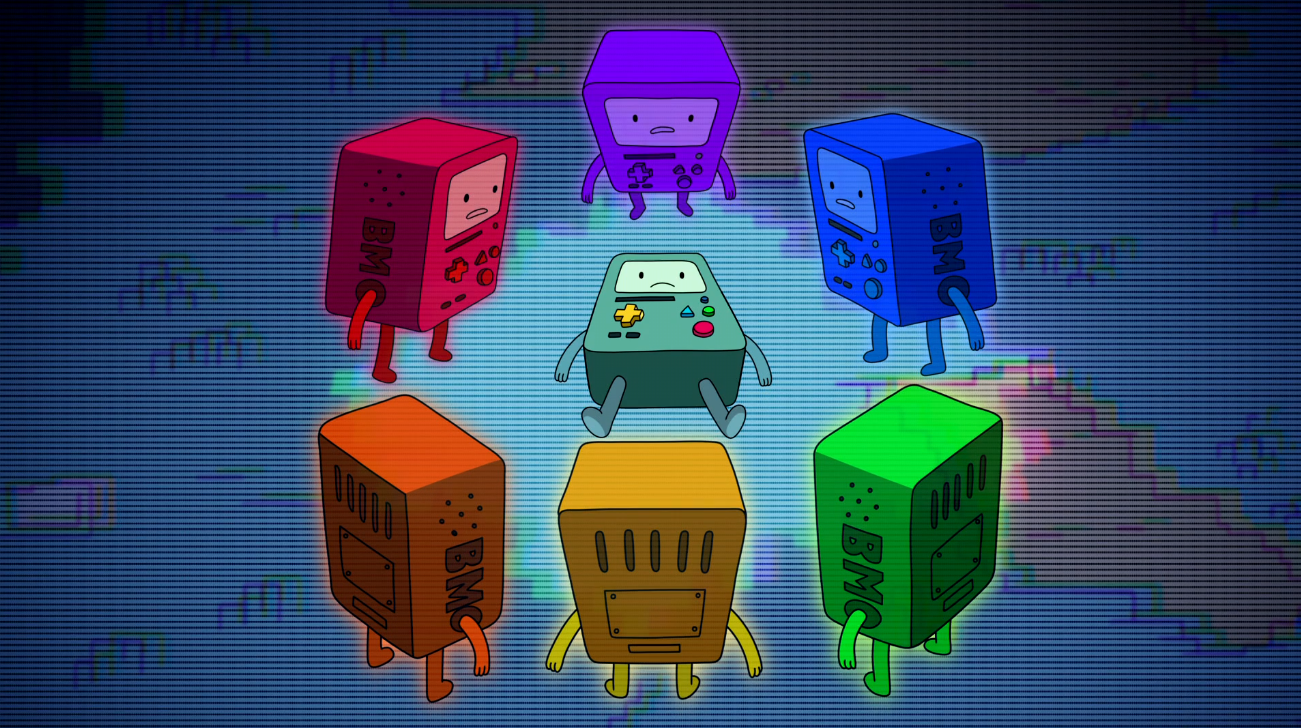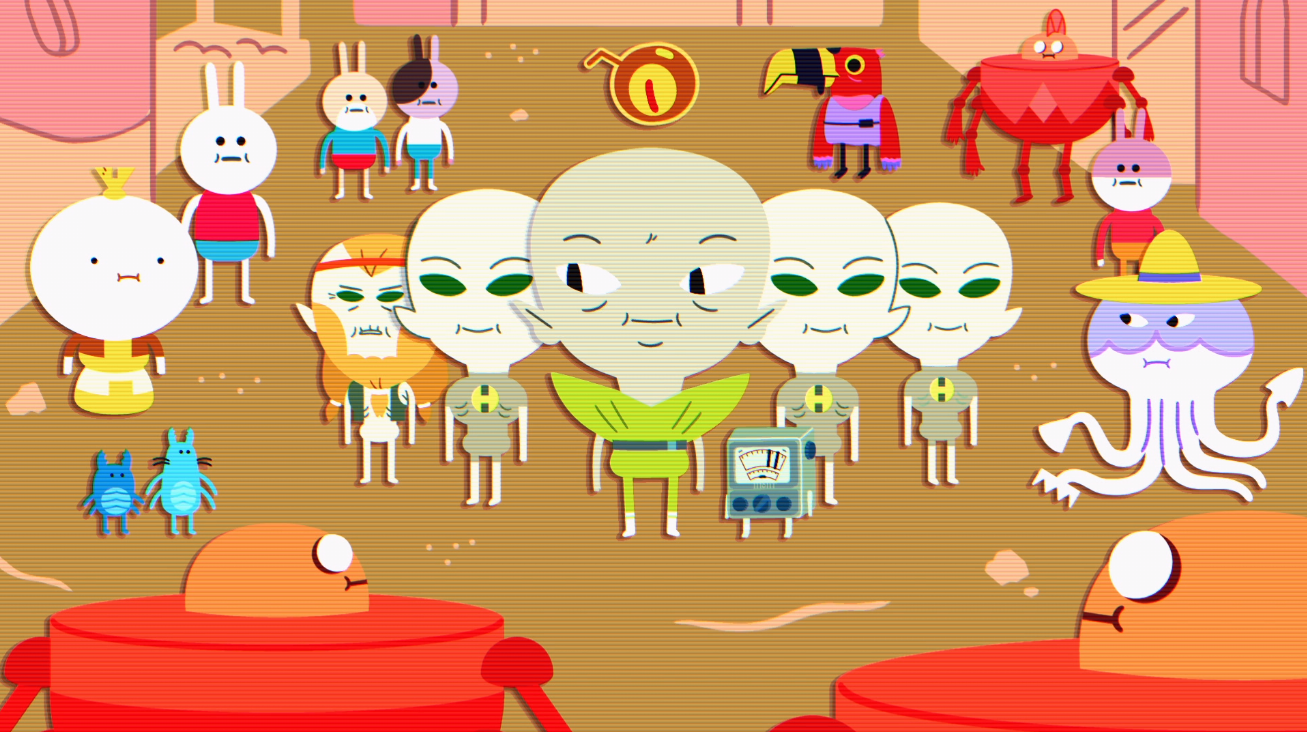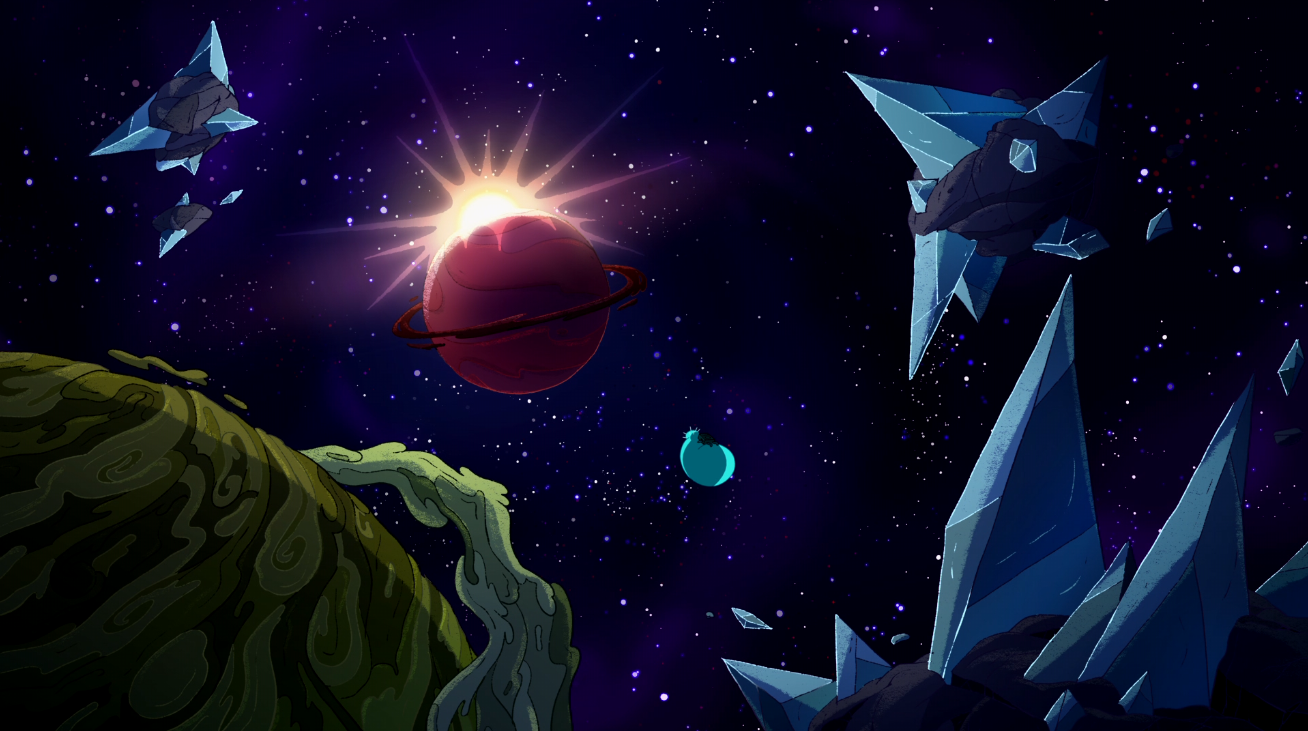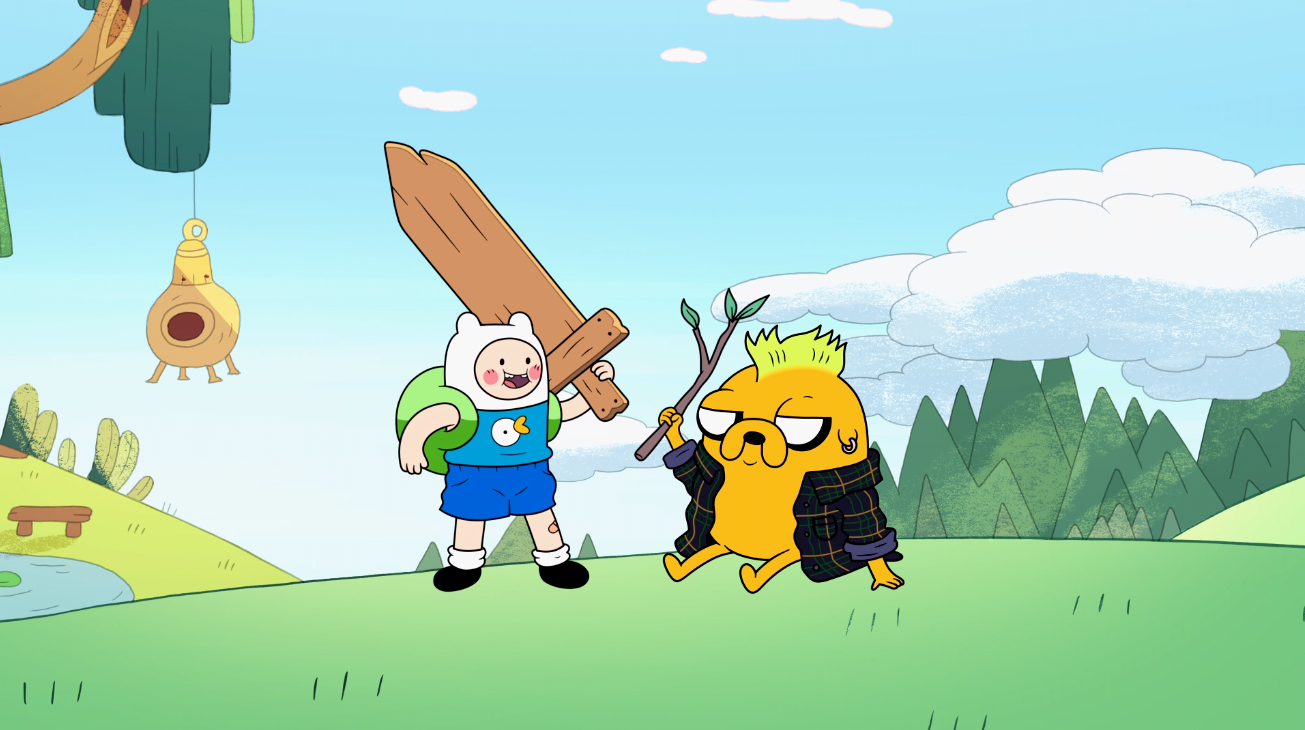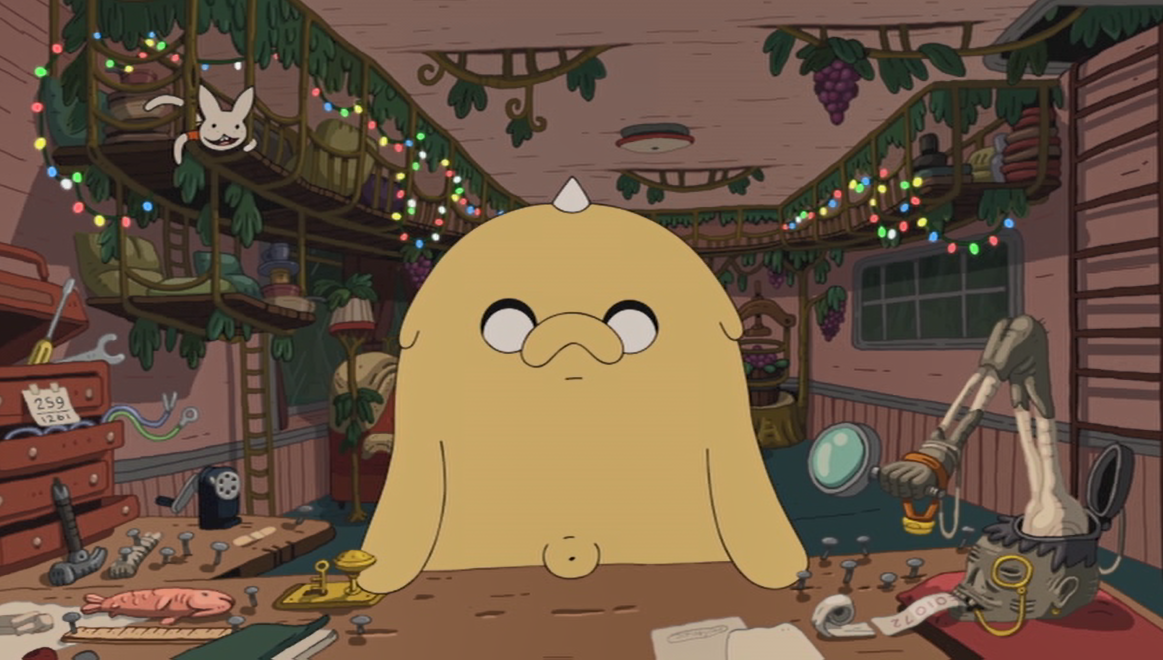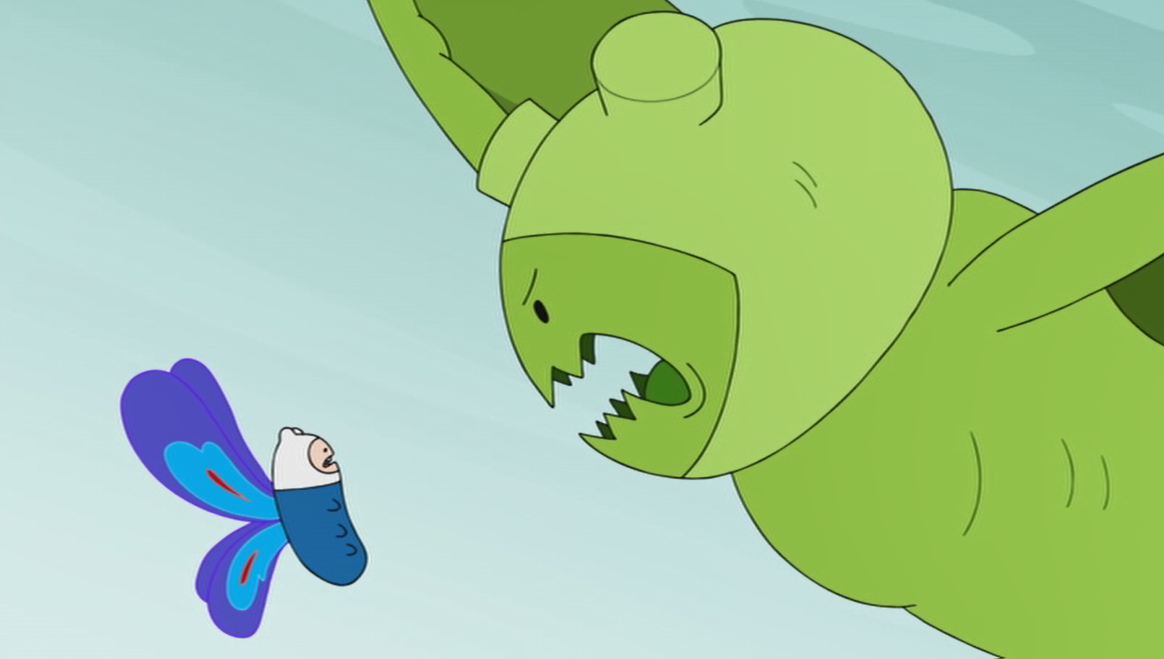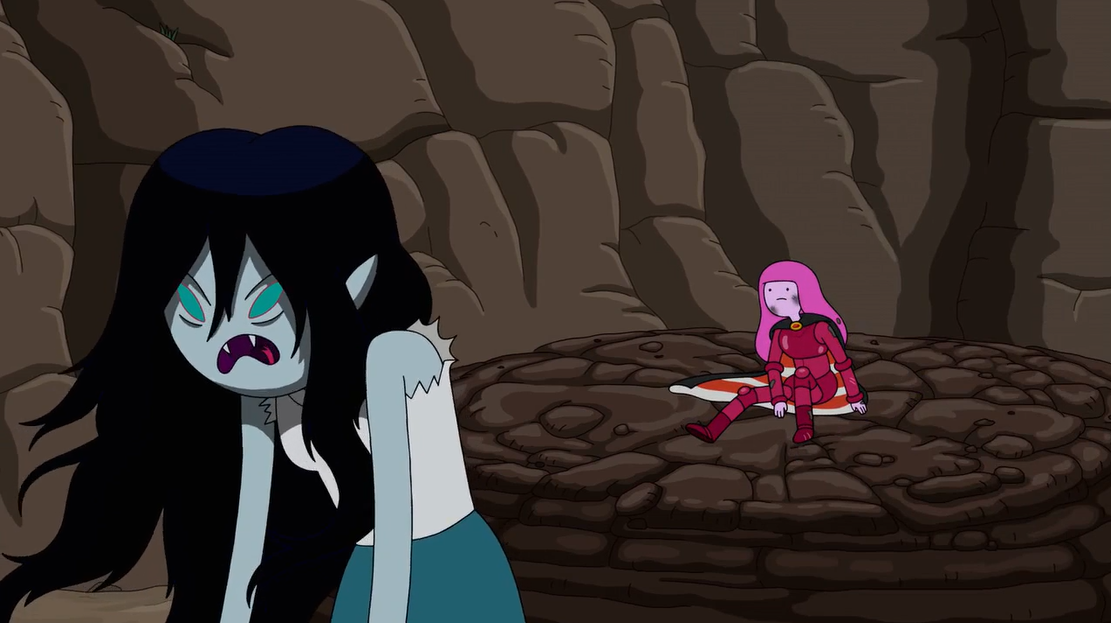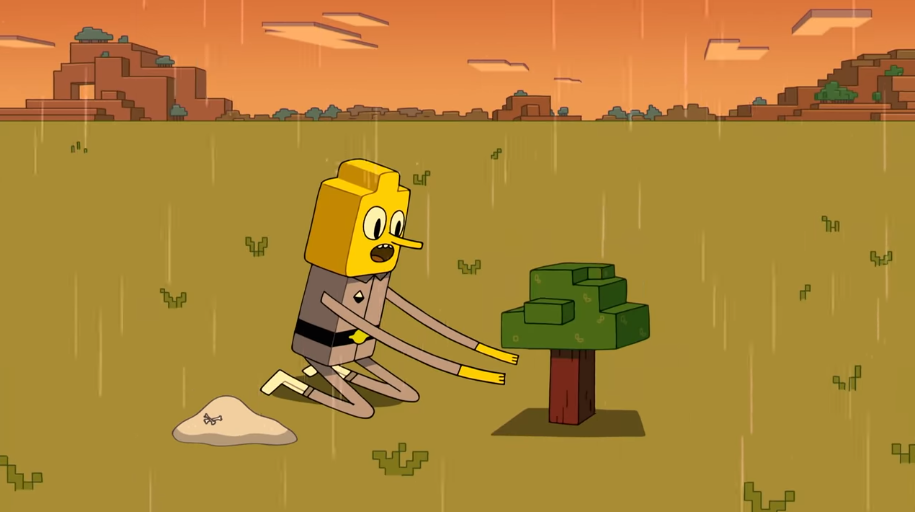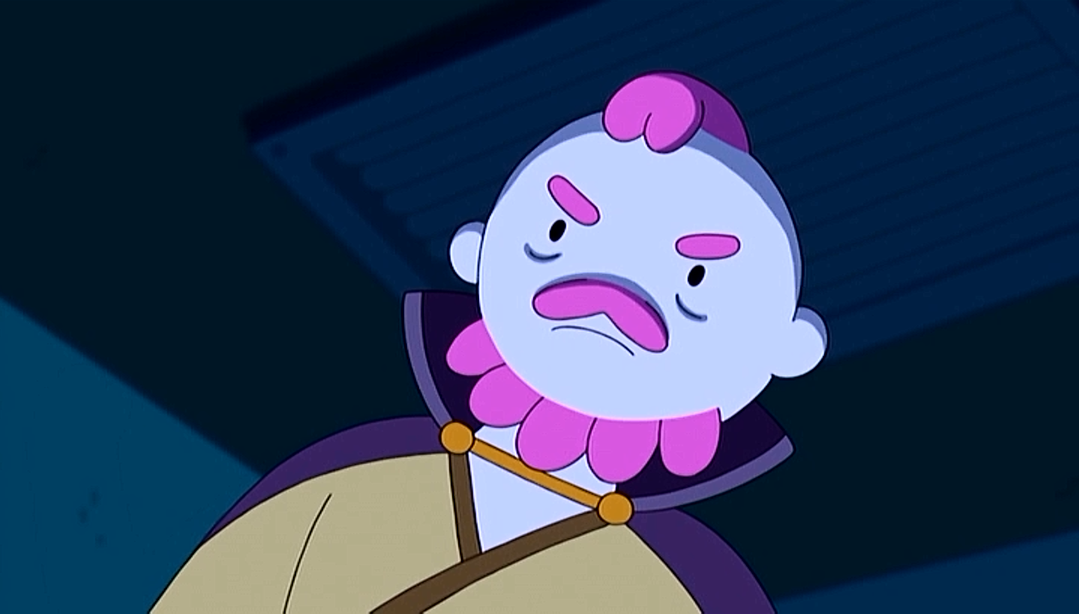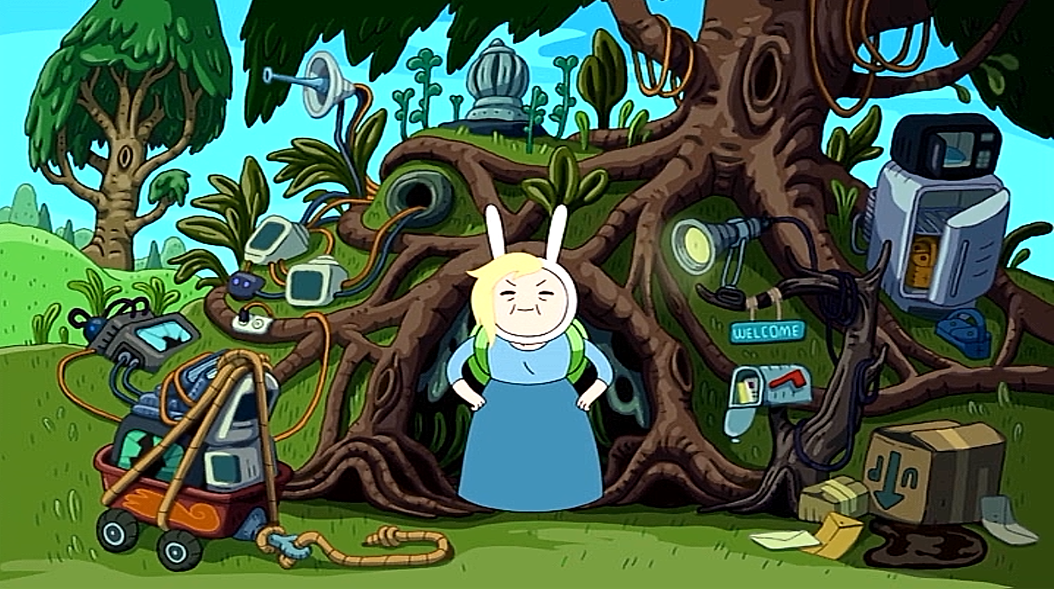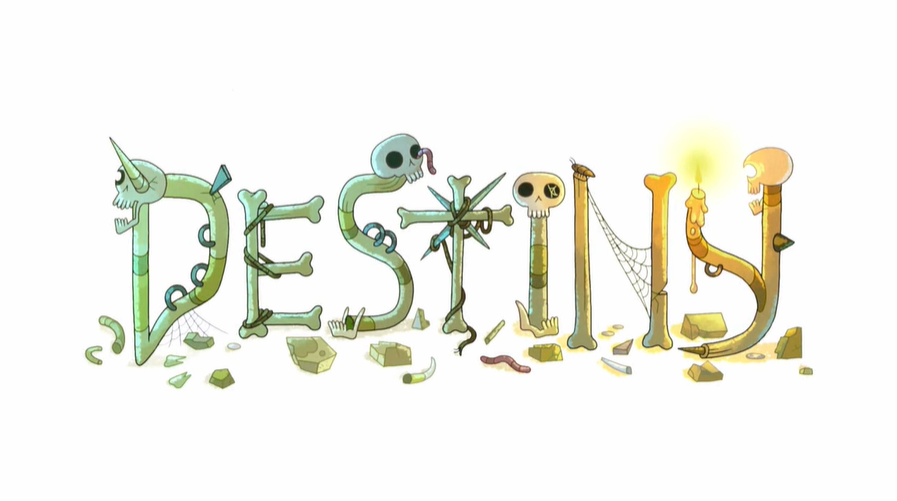
Original Airdate: September 14, 2023
Written & Storyboarded by: Jacob Winkler, Sonja von Marensdorff, Hanna K. Nyström & Anna Syvertsson
One of the promises of Fionna and Cake that I was perhaps the most skeptical about was the incorporation of multiverse elements. The multiverse has become a staple of pop culture in recent years and it’s growing a bit tiresome seeing every genre of content trying to adopt it for storytelling opportunities. It’s easy to see the appeal of the concept, because it does allow for generally limitless storytelling that doesn’t have to be grounded in any sense of logic or reality. But in most examples, it’s utilized for gimmicks more than anything. Even in stuff I like, such as the Spider-Verse movies, it’s a concept that very easily defaults to cameo opportunities from other parts of the franchise or absurdist additions that don’t really add anything outside of being comical. I didn’t want Fionna and Cake to default to hopping from one world to next, visiting a Steven Universe world or meeting a Lego version of Finn. However, it isn’t entirely fair to harp on Adventure Time for necessarily jumping on the bandwagon when the multiverse was apart of its lore far before it became a hot topic – they even beat Rick & Morty to the punch! It’s additionally very reassuring that they incorporate it into Fionna and Cake in a way that feels very meaningful and is actually one of the stronger elements of the season as a whole.

The cold open for Destiny is pretty cool. I like how much Farmworld Finn’s presence is set up in this one. Farmworld prior to the ruling of “The Snowman” felt like an early modern countryside of simple folk that didn’t interact with supernatural elements at all. This beginning paints a similar reality, with the implication that the citizens remained skeptical and on the opposing side of magic, only now it’s evolved into a dystopian, anarchistic landscape. More on that in a bit.
Jumping right into where last episode left off, Simon reveals his plans to help make Fionna and Cake’s world magic again by finding the crown and performing the GOLB ritual once more. It’s clear to see that the events of last episode have put Simon in a state of rejection of his own self, as he seems no longer willing to accept his current place in life. Once again channeling into the themes of addiction, Simon craves his previous life being under the power of the crown, even if it means that he’ll be out of his mind. At least he’ll be numb to whatever pain he’s currently experiencing and won’t have to deal with his issues on a conscious level. Simon justifying using the crown to save Fionna and Cake also isn’t that different from how he used the crown to save Marceline. I have a feeling that, more than just Simon’s own nobility, the power of the crown is tempting enough for Simon that he’s able to make those justifications. Of course, he would never use it if it meant Marceline would be in any real danger, hence him leaving her at the beginning of Everything Stays, but he’s willing to take those chances most of the time because he’s allured to its magic abilities. The same can be said here – with how much he feels purposeless in his own skin, it’s not hard to reel him back in. Even though he knows it’s bad for him and that it will completely change him as a person, it’s a reality he’s willing to accept because at least it will benefit the lives of others. It’s a noble act in theory, but does have a layer of self-centeredness behind it. Simon’s not really thinking about the lives he may hurt if he does start using the crown again, including Marceline, who would end up being left in the dark to a decision being made behind the scenes. Nor is he really thinking about the other lives it would impact in Fionna and Cake’s world, something that Fionna herself is guilty of.
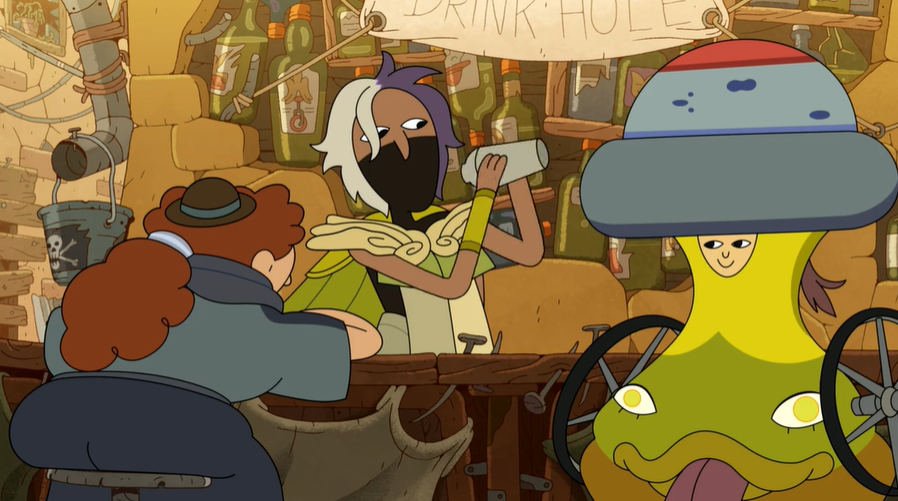
I like all the continued banter between Fionna, Cake and Simon. I mentioned before, but I’m a sucker for all of the cat gags this season has churned out, and Cake bringing Fionna the dead mouse thinking that she loves it is right up my alley. Fionna and Simon’s relationship becomes a lot more fun with Destiny as well. They didn’t really get a ton of time to work off of each other last episode because so much was being thrown at the viewer, so seeing them both work off of each other was nice. I like how she kinda treats Simon like a cringey stepdad that doesn’t understand social cues. Like when he won’t shut the fuck up about Greek mythology at a stranger’s dinner table and Fionna comes back at him with, “dude, what are you talking about?” Simon gets his own bit of sass in though, when Fionna mistakes him for a doctor. He’s an antiquarian, dammit! It’s all fun stuff, and appreciate any time the episode takes to slow it down a bit. There’s some nice moments where Fionna and Cake also banter around at the beginning while looking for loot to steal. The slow pacing of the season up to this point has kind of felt drawn out, but I like that we do get these small moments to breathe in the midst of the ball rolling. Helps it stay with that Adventure Time feel. Oh yeah, also, Scarab’s back again! He does some stuff in this one, but it’s mostly not noteworthy. A bunch of people online were all horned up over his human design, which was fine. He also tinkers around with Prismo’s Time Room and I like the oozing, pink plasma that seems to control synthetic channels to the multiverse. That’s pretty much all I have to say about Scarab in this episode.
The exploration of the Mad Max evolved Farmworld is a blast. I love the designs of the citizens, mostly based on concept art by Michael DeForge, Steve Wolfhard and Delfina Pérez Adán, who previously provided animation work for Distant Lands. I also like all the bits of absurdity sprinkled in; the longshot of the boy on stilts stealing the tire for the car that merges with a much larger vehicle was great, and I like how there’s bits like the chicken man that don’t even make sense in-universe. Like, what got him into this position? Also, this is the first time I’m realizing that the human who notices Cake’s powers is a Farmworld version of Chet! That’s gotta be the most casually sprinkled in cameo of the season. Though, with every episode, I feel like there’s another one that I missed, so we’ll see if I’m still saying that by the end of it. We’re soon reintroduced into The Destiny Gang, whom I was delighted to see again! They really don’t get too much to do that’s funny or interesting and mostly just drive forward the conflict of the episode, though they get a few funny lines in, namely, “he died doing what he loved – trying to ride alligator like horse!”
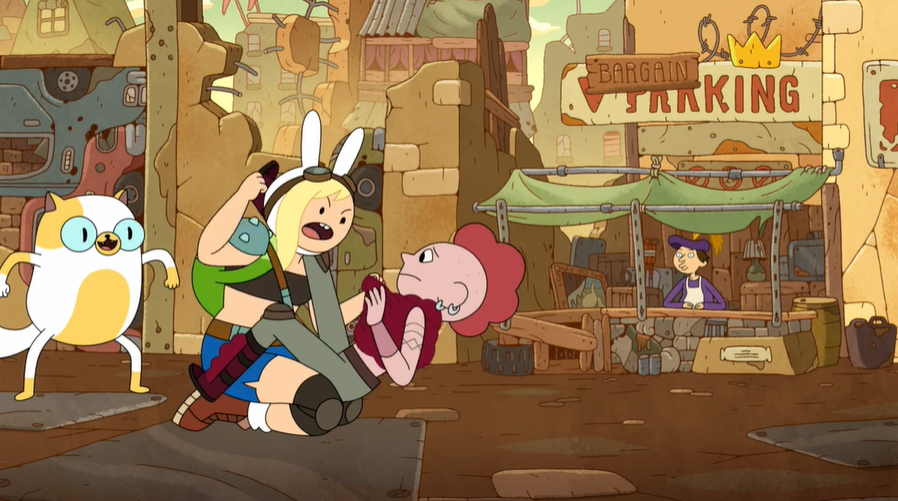
Most of the episode is more focused on Big Destiny’s kin, introducing us to Little Destiny, who probably has the only design I don’t like out of these gaggle of characters. I dunno, whenever Adventure Time constructs characters using more realistic anatomy and detailed facial features it doesn’t really work a whole lot for me. It kinda reminds me of that lamp from Friends Forever – I think it’s the pronounced lips more than anything. In general, I’m not too captivated by Little Destiny’s role in the episode and her connection to a certain blonde boy, who we’re introduced to shortly after this season’s umpteenth Choose Goose appearance thus far. We’re also treated to a weird little jab from Big Destiny’s other child about wanting to cut Fionna’s nose off, but somebody beating him to the punch. Is this factoring in that dumb theory Pen Ward himself had early on in the series about Ooo’s humans being mutated by having no nose and beaded eyes?? Adam was a pretty vocal critic of this theory back on the commentary of the early seasons, so it might have been a nod to that little debacle. Or even just implying that Farmworld citizens have big ass noses in general.
The aforementioned blonde boy leads our crew to what is believed to be Farmworld Simon, but we get something so much more beautiful: Repressed Adult Farmer Finn™!! This is where my inner fanboy is able to come out and thrive – I LOVE this version of Finn. Going back to my first statement about how the season utilizes the multiverse to the best of its abilities, I like how much ongoing commitment there is to showing that these versions of the main characters essentially are the main characters, just under a different set of circumstances. It’s kind of playing off of what the original series did with Fern, who was just a carbon copy of Finn that was launched in an entirely different direction because of situational experiences. Only this seems to play around with the idea that the nature of our characters is relatively the same throughout each universe, but the nurturing differs almost entirely. Farmworld Finn was given a second chance by Prismo at the end of Crossover, but it’s clear that this wasn’t necessarily a happy ending for him. The impact of the crown left him with psychological scars, as the Finn we see here is far from the almost cluelessly joyful Finn we saw only episodes earlier.
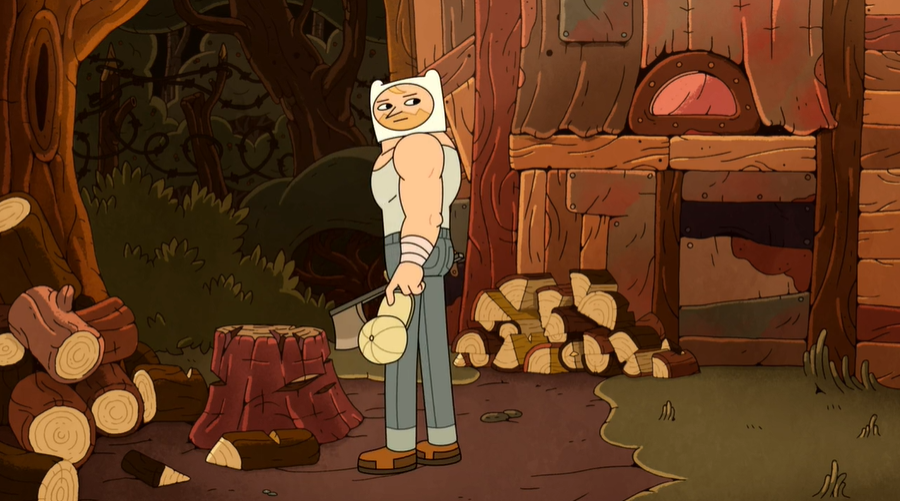
Even outside of a psychological perspective, Farmworld Finn has appears to have chosen (or fallen into) a more traditional path by having lots of children and playing the role of a strong, stoic provider. Lots of people have noted that the 12 or so year time skip would mean that Finn had to have gotten someone pregnant when he was 16 or 17. I don’t think this is that crazy for a world that seems riddled in early modern culture and on top of that, we already know Finn is a horny devil. This is true across every part of the multiverse, especially when he has a dose of trauma under his belt. But yeah, I love his design and all his dialogue is crafted so perfectly. He gets to throw out great antiquated lines like, “I don’t truck with magic,” and, “be gone at first light.” It also can’t be understated how great Jeremy Shada’s performance is – I almost didn’t recognize him at first! Having Shada deepen his voice to sound gruffer is something that could easily feel forced but I think he pulls it off tremendously. He’s old enough at this point that he can channel more baritone inflections without it feeling beyond his scope. When he snaps at Simon for wanting to seek out the crown, the anger in his voice is really felt. And even beyond a speaking role, FW Finn has some really great silent moments where you truly get to experience his life in a nutshell; I love the way he notices how concerned his children are after he lashes out and quickly collects himself to not upset them further, and later when he quietly stares into the fireplace, troubled by the insanity of his past. It’s both a great way to help explore his trauma while also tying back into the delusions that Simon is convincing himself of. Though Ice King probably never brought a level of damage akin to what “The Snowman” did, the impact of the crown and the general madness that it causes is played with a level of absoluteness here, in a way the season would continue to support.
Speaking of Finn’s kids, the names “Jay” and “Bonnie” return after being introduced in Puhoy! This was a nice little detail that may even build on the concept that the Pillow World was, indeed, part of the multiverse. It makes me wonder just how many instances there are in the series where the potential of a wormhole opening is implied – I think Puhoy is a key-in for the most notable example. Farmworld Bonnie is especially cute, which also makes me wonder if there is a Farmworld equivalent to Bubblegum. I like to think that there may not be, or if there is, Finn may have never even crossed paths with her. Finn just named his child that because somewhere in his being he knew he liked that name, which is a concept I think is neat. He also has a gaggle of additional unnamed children, some of which possess features similar to Huntress Wizard’s human forms seen throughout the season (green eyes, red hair). I don’t know how down I am with the continued exploration of Finn and HW’s relationship to the point where she is his soulmate across multiple universes. I liked how the show ended not really focusing on who Finn “ended up” with, because having him settle down at 17 always felt a lil weird. I guess if I really want to tie up the continuity I established with FW Finn getting a girl pregnant at an early age, maybe he met up with her in a similar way to their Ooo counterparts’ meeting in Flute Spell, only they actually consummated it. I guess her role as Finn’s wife is still up in the air because she seemingly passed away in Farmworld, but I think the hints speak for themselves. Even with how much Farmworld Finn has lost, it’s sweet that FW Jake is still kicking. I have no idea how this ancient pooch has lasted so long – it’s possible that Finn got him later on in his childhood as opposed to having him early on, so he’d be around 15 or so now. I think he probably just lives a chill ass countryside life and gets fed well with lots of pets, which is enough to make my god damn heart melt.
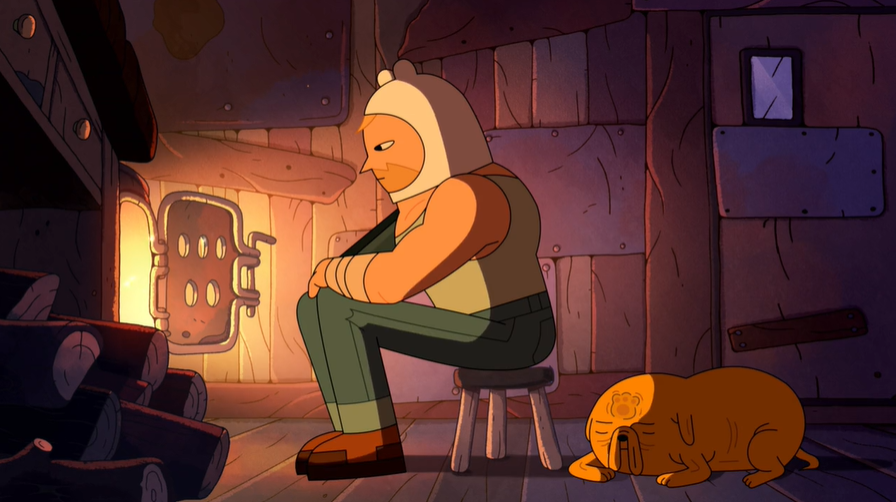
Jay is the most prominent of the Mertens family in this episode, and I’m mostly lukewarm on his presence. He’s involved in this star-crossed lovers’ romance with Little Destiny, which I guess adds a level of stakes for the episode? I dunno, I feel like they already had a decent amount of tension going with the fact that they have the Destiny Gang wanting to abolish magic and Scarab after them at the same time. I’m not really sure how their relationship adds to the episode or the season as a whole – I guess they claim their own destiny (no pun intended) in a way that supports what Fionna, Cake, and Simon are also striving for. Still, I don’t find them super engaging as characters and their bits are pretty standard Romeo & Juliet fodder. They even have Cake working off of them by kind of making fun of their whole shtick, but it’s played pretty straight otherwise. Still, it was all worth it to see Farmworld Finn break out a fuckin’ flamethrower arm and set Destiny Gang members on fire. Man does not fuck around! The breakneck pace of the last few minutes are solid: Cake trying to stretch out but still struggling to use her powers is fun; I love Big Destiny’s lashy, perfect eyes when he has his glasses broken; the final confrontation between Scarab and Farmworld Finn is greatly executed, with an impactful curb stomp that had plenty of people questioning whether FW Finn was killed. I don’t really think that’s what they’re going for, but who knows. I feel like the way the rest of the season pans out leaves me believing this probably isn’t the case and it’d be lame as hell if Finn in ANY universe was taken out in such an unceremonious way. This farm boy needs to go down in flames! Also, I didn’t know where else to add this in, but does anyone have any thoughts about Simon mentioning that the crown smells like freshly cut grass? I guess it could just be a throwaway line, but it felt too random to be that. Haven’t seen any theories otherwise, though.
That blabbering aside, I dig Destiny. It works with the multiverse concept to the best of its ability by helping expand the show’s characters beyond just the conditions of Ooo. A looong time ago in my review of Finn the Human, I criticized the episode for not really capturing the spirit of Finn to the best of its abilities, but Destiny makes it pretty clear that… that’s the point. Finn, and all of these characters, are subject to change based on their surrounding environments, leaving us with fragments of the same characters that have their own unique perspective on life. It’s still the soul-shape of Finn in his Farmworld counterpart’s body (that hilariously hushed “math” proves it), but with a lifetime full of different experiences that allowed him to grow in his own unique way. I also enjoy the idea of focusing on one universe per episode as opposed to having them hop from world to world – it allows for the art direction to really thrive when the environment is able to commit to one core theme. And sprinkled in are some solid bits from Simon, Fionna, and Cake, but did you really expect me not to make this entire review centered around Finn at this point? I never claimed to be nonpartisan.
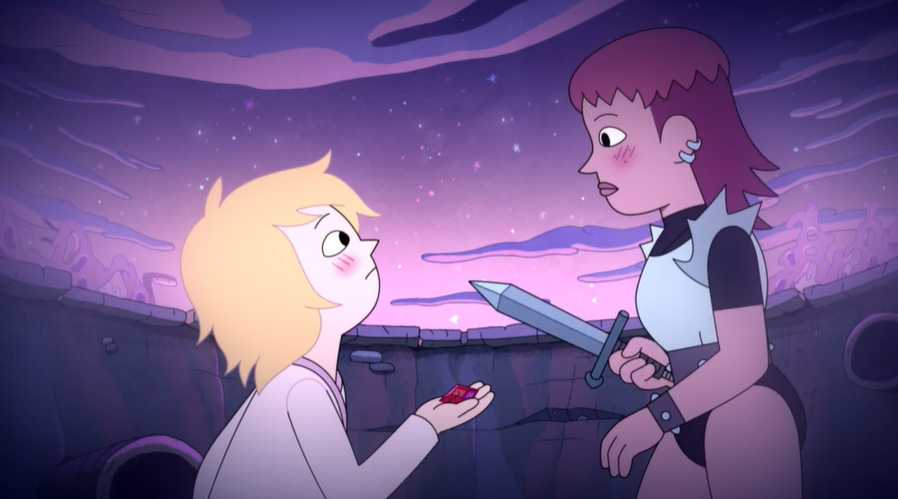
Fionna and Cake brought back a lot of AT veterans for some freelance work, including Charmaine Verhagen! Verhagen co-boarded Wheels and worked on the series as a storyboard revisionist starting around season 8. Verhagen did some concept art for Destiny character designs, but they didn’t end up making it into the actual episode. A shame, because I really like the withered Jakes she whipped up! You can check out her concept art here.

